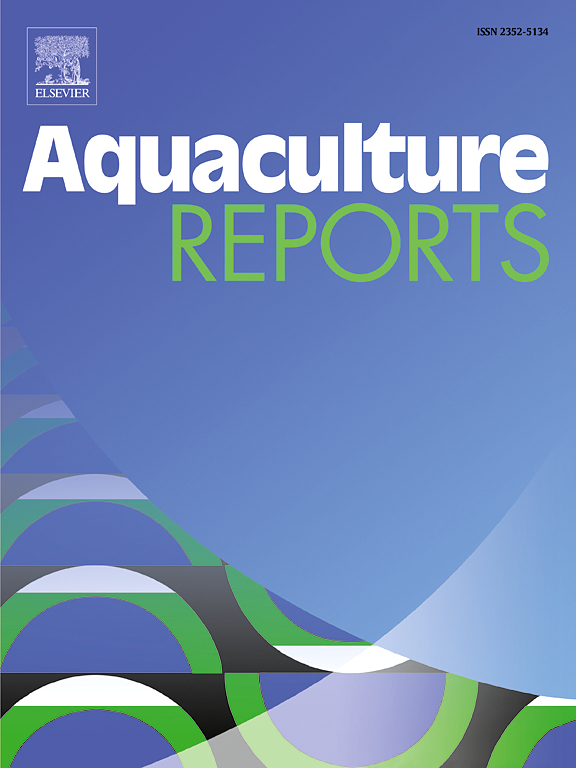More than just a pinch of salt? The impact of increasing salinity on maraena whitefish in different husbandry systems
IF 3.2
2区 农林科学
Q1 FISHERIES
引用次数: 0
Abstract
The present study investigated the influence of different salinity concentrations on gene expression patterns in maraena whitefish (Coregonus maraena) from three aquaculture facilities. Over a period of 10 weeks, we compared maraena whitefish from the same batch of fertilised eggs that were kept in a freshwater-pond system and a net-cage facility in the southwestern Baltic Sea, where periodic saline intrusions from the North Sea occur. Having demonstrated differential expression of the two variants of the well-established atp1a1 biomarker gene in gills of maraena whitefish from both habitats, we profiled the expression levels of a further 22 seawater-tolerance biomarkers in the gills, skin, head kidney and liver. The expression profiles were largely consistent across whitefish from both habitats, with only sporadic modulations. A principal component analysis revealed that these differential expression patterns were dominated by eef2, ghr and wasf1. A subsequent salinity experiment, carried out in a recirculating aquaculture system under constant environmental conditions, revealed that increases in salinity from 0 to 8 Practical Salinity Units (PSU) resulted in significantly elevated transcript levels of fkbp5 and atp1a1a in the gills. The reduced levels of eef2, ghr, wasf1, nampt and uba1 in the head kidney, skin or both tissues indicated a response mechanism to higher salinity (20 PSU). Altogether, only the quantification of the atp1a1a gene in the gill tissue provided reliable evidence of successful acclimation from low- to high-salinity water in all three facilities investigated. Based on the overall transcriptional data and the generally good fish physical constitution, we assume that maraena whitefish were not negatively affected by salinities up to 20 PSU suggesting their ability to tolerate dynamic brackish-water environments.
求助全文
约1分钟内获得全文
求助全文
来源期刊

Aquaculture Reports
Agricultural and Biological Sciences-Animal Science and Zoology
CiteScore
5.90
自引率
8.10%
发文量
469
审稿时长
77 days
期刊介绍:
Aquaculture Reports will publish original research papers and reviews documenting outstanding science with a regional context and focus, answering the need for high quality information on novel species, systems and regions in emerging areas of aquaculture research and development, such as integrated multi-trophic aquaculture, urban aquaculture, ornamental, unfed aquaculture, offshore aquaculture and others. Papers having industry research as priority and encompassing product development research or current industry practice are encouraged.
 求助内容:
求助内容: 应助结果提醒方式:
应助结果提醒方式:


